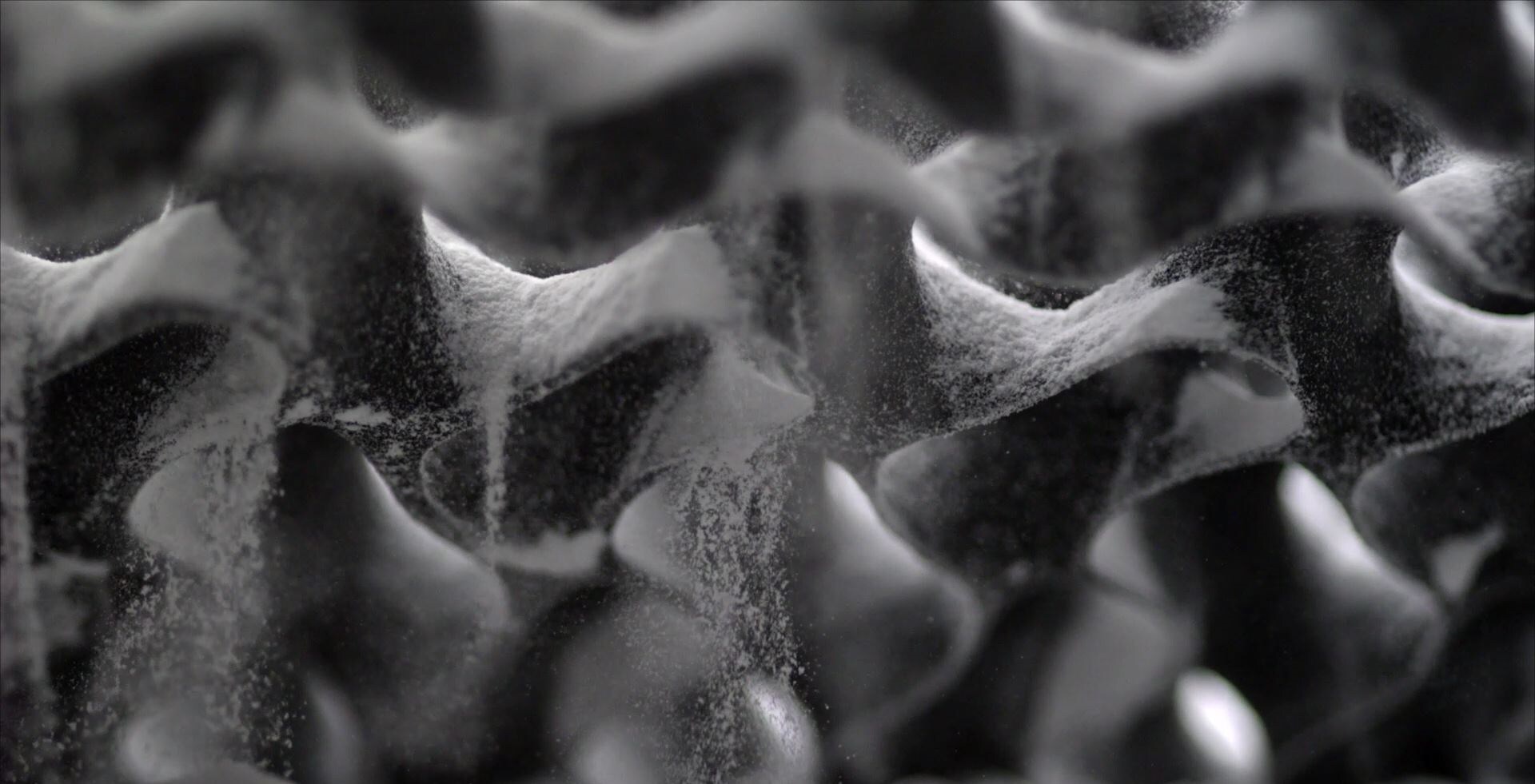Find the right 3D printing plastic materials for your needs

HP 3D HR PA 12 FR enabled by Evonik
Halogen-free flame-retardant material16 with 60% reusability, disruptive cost per part and smooth surface finish.15

HP 3D HR PA 11
Ideal for producing strong, ductile1 functional parts and minimize waste with a quality bio-based material.2

HP 3D HR PA 12 S enabled by Arkema
Ideal for producing premium surface aesthetics with a lower cost per part4 and high reusability.9

HP 3D HR PA 12 enabled by Evonik
Ideal for producing strong, low-cost parts10 that reduce your carbon footprint.11

HP 3D HR PA 12 W
Ideal for engineering-grade parts for white or vibrant color applications.

HP 3D HR PP enabled by Forward AM
Ideal for producing chemical-resistant6, weldable, low moisture absorption, functional parts ensuring an optimal balance between performance and cost.14

HP 3D HR PA 12 GB
Ideal for producing stiff, dimensionally stable, quality parts.

HP 3D HR TPA enabled by Evonik
Ideal for producing easy-to-process, flexible, and lightweight parts with enhanced rebound resilience and high part uniformity.

Forward AM Ultrasint® TPU01
Flexible, functional parts ideal for serial production.

ESTANE® 3D TPU M88A
Flexible, durable, and lightweight parts.

ESTANE® 3D TPU M95A
Ideal fit for both prototyping and manufacturing scale-up applications.
3D Printing materials properties: mechanical and dimensional
Mechanical properties
HP Jet Fusion 5200
HP Jet Fusion 5400
HP Jet Fusion 5600
Dimensional capabilities
HP Jet Fusion 5200
HP Jet Fusion 5400
HP Jet Fusion 5600
3D Printing material resources and guides
Biocompatibility guide
Find out which materials are suitable for specific applications of biological use.
Materials compatibility chart
Materials with printer compatibility at a glance.
Safety information
Download the necessary safety datasheets. Use filters to quickly find what you need.
Active materials partnerships
HP is working with top-tier materials companies to better address 3D printing needs across industries. With these partners, HP is enabling performance improvements and new possibilities for part properties. If you would like to join us in material development activities, contact us.
Active post-processing partnerships
HP has established partnerships with leading post-processing experts to strengthen its ability to meet 3D printing demands across different industries. Together with these partners, HP is driving advancements and uncovering new possibilities for finished parts.
Disclaimers
- Testing according to ASTM D638, ASTM D256, and ASTM D648 using HDT at different loads with a 3D scanner for dimensional accuracy. Testing monitored using statistical process controls.
- HP 3D High Reusability PA 11 powder is made with 100% renewable carbon content derived from castor plants grown without GMOs in arid areas that do not compete with food crops. HP 3D High Reusability PA 11 is made using renewable sources, and may be made together with certain non-renewable sources. A renewable resource is a natural organic resource that can be renewed at the same speed in which it is consumed. Renewable stands for the number of carbon atoms in the chain coming from renewable sources (in this case, castor seeds) according to ASTM D6866.
- Carbon footprint reduction calculated by Arkema.
- Based on internal HP testing, you can achieve zero waste by applying all the fresh materials added to the system to the final printed parts (starting at 85% reusability ratio and 7% packing density). With HP 3D HR PA 12 S, enabled by Arkema, using Balanced print mode, printed part density doubles powder density, optimizing powder usage for continuous printing (requiring a fresh material ratio that’s twice the input packing density).
- Producing functional parts batch after batch. For testing, material is aged in real printing conditions and powder is tracked by generations (worst case for reusability). Parts are then made from each generation and tested for mechanical properties and accuracy.
- For HP 3D High Reusability PP enabled by BASF, based on internal HP testing, May 2020, with tests for mechanical property retention, dimensional stability, and weight change after 7- and 30-day immersion with acids, bases, organic solvents, and aqueous solutions. Due to the material characteristics, extra tuning is required in part design and printing, compared to other rigid HP 3D Printing materials.
- This product is certified for Federal Motor Vehicle Safety Standard (FMVSS) 302 for Flammability of Interior Materials–Passenger Cars, Multipurpose Passenger Vehicles, Trucks, and Buses.
- Effective October 1st, 2024, the HP Jet Fusion 4200 3D Printing solution has been discontinued. HP remains committed to your success and will continue to provide support and consumables for this 3D printer until October 1st, 2029.
- Recycling program from Arkema. Available in Europe and US. Check Arkema's website for more information.
- Based on internal testing and public data for solutions on market as of April, 2016. Cost analysis based on: standard solution configuration price, supplies price, and maintenance costs recommended by manufacturer. Cost criteria: printing 1.4 full build chambers of parts per day/5 days per week over 1 year of 30 cm3 parts at 10% packing density on Fast print mode using HP 3D High Reusability PA 12 material, and the powder reusability ratio recommended by manufacturer, and printing under certain build conditions and part geometries.
- Carbon footprint reduction calculated by Evonik.
- For more information, check safety datasheets here.
- Testing according to ASTM D638, ASTM D256, and ASTM D648 with a 3D scanner for dimensional stability. Testing monitored using statistical process controls.
- Compared to other materials in the HP 3D materials portfolio as of May, 2020.
- Commercially available in February 2025, compatible with HP Jet Fusion 5600 Series 3D Printing Solutions.
- This flame retardant is non-halogenated according to IEC 61249-2-21, based on Evonik material composition on dated September, 2024.



